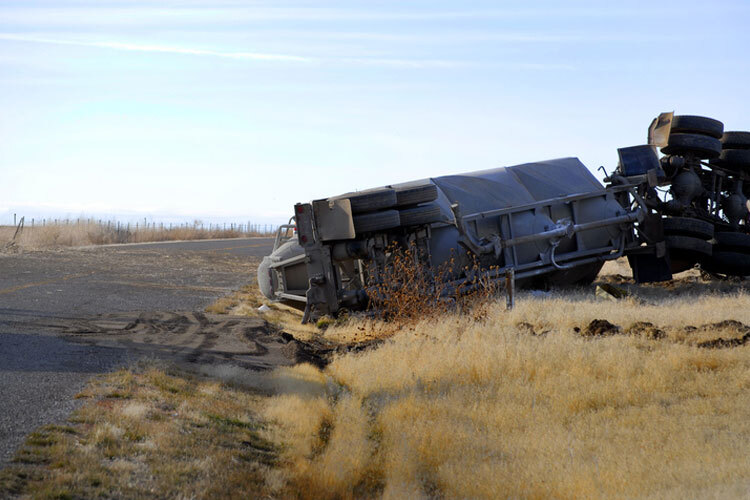
For passenger and private automobiles, driving in the cold is difficult enough. Low temperatures and humidity can impair motor performance, while slick, icy roads increase the chance of sliding and other mishaps.
Simply expressed, the risks of road accidents and injuries resulting from vehicle collisions are higher in the winter. The following information is provided by the Federal Highway Administration of the United States Department of Transportation:
- More than 70% of the country’s highways are located in winter-prone areas.
- These areas are home to over 70% of the population.
- Snowy or slippery pavement accounts for 24% of weather-related car accidents.
- Snowfall or sleet accounts for 15% of all weather-related car accidents.
- Every year, about 900 people are killed, and 76,000 people are injured in vehicle accidents caused by snow or sleet.
Truckers, particularly long-haul drivers, face significantly greater risks on the road.
To put things in perspective, the Federal Motor Carrier Safety Administration compares year-to-year crash statistics and categorizes the occurrence of truck and bus incidents into the following road surface conditions:
- Dry
- Wet
- Snow
- Ice/Frost
- Slush
- Water (standing and moving)
- Mud
- Dirt and gravel
- Sand
Except for two, all of these road situations can occur throughout the winter. Therefore, the ability to recognize causes or scenarios that may result in truck drivers being hurt or involved in a driving accident is critical.
Hazardous Conditions For Truck Drivers
Identifying hazards is the greatest approach to protect yourself from them. The following are some of the variables that make winter driving more dangerous for truck drivers:
- Temperature Below Zero — When the temperature dips below zero, mechanical components in truck engines can stall. Moisture in the engine, particularly the fuel line and fuel filter, is another issue. When it gets cold enough, the accumulated water might freeze, obstructing the fuel lines and preventing fuel from reaching the engine.
- Slushy and Icy Roads — The freeze-thaw cycle, which occurs when temperatures drop and increase in small increments, can make roadways extremely slick. Black ice can form on the road’s surface, which is a thin, transparent layer of frozen water. It can cause tires to lose their “grip” on the asphalt or pavement by reducing friction.
- Snow and Sleet — Long-haul truckers may be forced to travel despite heavy snow or sleet. It would be a dangerous drive since they would have to deal with subzero temperatures, slick roads, and poor visibility. The irony is that, in this case, slow driving is the default safety response. Unfortunately, driving slowly on interstate highways can be just as dangerous. These roads are built for high-speed driving, and the more experienced and confident drivers may be able to adhere to this guideline even if there is a lot of snow on the ground.
- Strong Winds — During the winter, strong winds can be enough to propel a car. High, narrow vehicles are at even greater risk, and yes, even trucks and 18-wheelers can be blown over by strong winds.
- Thick Snow on the Road — Accumulated snow on the road can cause it to become impassable. If a pile is left alone for long enough, the lower layers may freeze without anyone noticing.
Truckers must be very cautious when one or more of these situations exist on the route. Otherwise, they may encounter one or more of the following:
- Hydroplaning — Semi-trucks can hydroplane when water does not flow quickly enough through the tire grooves. When the temperature drops just enough for the ice on the road to melt, such accidents can occur.
- Skidding — When black ice covers the asphalt, there is no friction, and the tires’ traction on the road can be completely lost. Once a truck starts skidding on ice, the driver may lose control and safely have difficulty maneuvering.
- Crashing on Snowbanks — Trucks that hydroplane or skid on snowbanks can wind up in snowy ditches on the side of the road. Snowbanks may appear to provide a soft landing, but truckers can still receive an injury if they collide with one.
- Getting Into Single-Car or Multiple-Vehicle Accidents — Any of the scenarios mentioned above can result in a head-on collision with another vehicle. A multi-car pileup may occur if the accident occurs on a busy roadway. These are the most deadly because the vehicles involved can roll over, putting drivers, passengers, and other motorists in danger.
Truckers’ Health Risks In The Winter
Even if they are not involved in a car collision, truckers can receive an injury. In addition, they are exposed to various health concerns because they are working outside in the dead of winter. For example, while a truck’s heated cab is warm and comfortable, there are times when drivers must venture out and face harsh winter conditions.
The following are some of the most prevalent injuries and ailments that truckers suffer while driving in the cold:
- Frostbite — If exposed to the cold air and freezing temperatures for an extended time, unprotected portions of the body might suffer lasting tissue damage.
- Hypothermia is a condition in which the body drains heat faster than it can produce it. People frequently fail to identify that they suffer from hypothermia, making it even more deadly.
- Trench Foot — If a trucker’s feet are soaked or exposed to freezing water for an extended period, painful blisters can grow. Wrinkly, blotchy skin, numbness, itching, tingling, and pain when something warm touches the foot are some of the other symptoms.
- Slipping, Falling, and Tripping Injuries — Every exposed surface becomes wet, ice, and slippery in the winter. Even getting out of the truck can be perilous if the running board is covered in ice. If truckers lose their balance when out of their trucks, they risk sprains, bruises, and broken limbs.
What Rights Do Injured Truck Drivers Have?
Truckers who work for a trucking or distribution company should be aware of their health benefits, especially if they drive in the winter. If they become ill, are hurt, or are involved in an accident while on the job, they have the right to seek medical help and financial compensation from their employers or third parties who are at fault, if any.
Scottsdale Truck Accident Lawyers provide legal consultation and services and specialize in representing in situations including personal injury, insurance, and employment disputes. We fight tenaciously for our client’s rights and work hard to secure positive legal outcomes.
Please get in touch with us if you require legal assistance or counsel for trucking accidents or personal injury claims this winter.
RELATED ARTICLES
Recent Posts
- Major Theft Ring Busted: Over $200,000 in Stolen Lego Sets Recovered in Eugene, Oregon
- Judge Denies Texas’ Bid to Shut Down Migrant Shelter Network in El Paso
- Single Mother in Memphis Seeks Help for Troubled Son Amid Rising Concerns
- California’s Proposition 47 Reform Sparks Intense Political Debate Over Public Safety
- U.S. Man’s Social Security Benefits Denied Over Citizenship Confusion
Categories
Our Supporters
Gold Supporters
Christopher Simon – Atlanta Truck Accident Lawyer
Skiver Law Firm – Phoenix Truck Accident Lawyer
Winer, Burritt & Scott, LLP – Los Angeles Clergy Abuse Law Firm
Michael E. Fenimore P.A. – Pensacola Car Accident Lawyer
Pillsbury & Coleman, LLP – San Mateo Long Term Disability Lawyer
The Law Office of Randall J. Wolfe, P.C. – Oregon City Personal Injury Lawyer
Davies Hothem Injury Law – Buford, GA Car Accident Attorney
Houston Federal Criminal Defense Attorney
Darrow Law Firm – Houston Federal Crime Lawyer
Kansas City Personal Injury Lawyer
Atlanta Truck Accident Attorney
Aitken *Aitken* Cohn Trial Lawyers – Santa Ana Personal Injury Attorneys
Dawson Law Group- Portland Personal Injury Attorneys
CT Mediation Center- New Haven Family Law Attorney
Little Rock Personal Injury Lawyer
Katy Car Accident Lawyer
Franklin Divorce Attorney
Palermo Law- Long Island Personal Injury Lawyer
Dan Rose – San Francisco Car Accident Attorney
Taylor Siemens – Liberty, MO Personal Injury Attorneys
Pfeifer Law Firm – Little Rock Car Accident Lawyer
Walkup, Melodia, Kelly & Schoenberger – San Jose Car Accident Attorney
Solomon, Dwiggins, Freer & Steadman – Las Vegas Business Litigation Lawyer
Roane Law – Asheboro NC Car Accident Lawyer
Dorsch Law Firm – Overland Park Estate Planning Attorney
The Tennessee Sledgehammer – Hermitage, TN Car Accident Lawyer
Cook Law Group – Gainesville, GA Car Accident Lawyer
Simon Bridgers Spires – Atlanta Personal Injury Lawyer
Injury Law Associates – Kansas City Motorcycle Accident Lawyer
Potts & Potts – Honolulu Personal Injury Attorney

